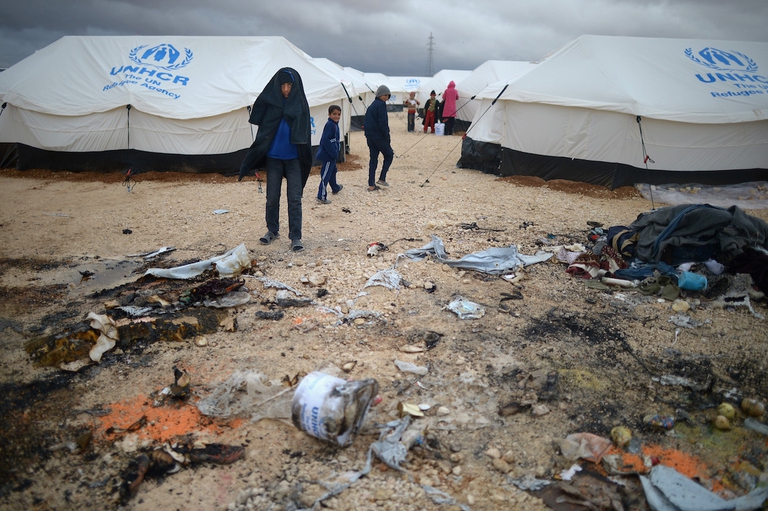
The Louise Michel is the humanitarian rescue ship saving lives in the Mediterranean. Financed by the artist Banksy, it has found a safe port in Sicily.
Non lontano dal confine con la Siria, il campo profughi di Zaatari è diventato ormai una delle città più grandi della Giordania. Dove si vive di speranza.
Zaatari is one of the largest cities in Jordan. It’s a city with no streets, no buildings, no means of transport: it’s the country’s largest refugee camp, populated by tens of thousands of Syrian refugees, forced to flee their land ever since the nation governed by Bashar al Assad burst into a long and bloody war.
There’s a multitude of blue and grey tents, which could be mistaken with the surrounding desert. A video published by BBC show an aerial view of it: a heap of misery on ochre sand, in the middle of nowhere.
Zaatari is currently home to 80,000 refugees. Every day it welcomes 20,000 new residents. It’s “an open-air prison, where people – mostly coming from the city of Daraa – do anything but wait, while losing their hope,” told the French newspaper France24.
The camp opened on 28 July 2012. According to BBC, “it costs about 500,000 dollars a day to run, with half a million pieces of bread and 4.2 million litres of water distributed daily”. Among the tents, little shops, barbers, bazars, and a supermarket rised up. There’s even a shop to rent wedding dresses, for 20 dollars a day. But this isn’t enough to make it a normal life.
Zaatari camp completely relies on humanitarian aids and on the work of non-governmental organisations, which struggle to maintain acceptable conditions in the camp, especially when summer temperatures rise up to 42°C, practically making the tents ovens.
Al Jazeera’s investigative report, published in October 2015, tells the stories of those people who have been living in the camp for almost three years. Hamdan, arrived from Khirbet Ghazalah, Southern Syria, with his family of nine, said: “I thought we were going to stay here for a month – two at most – to wait until things calm down”. But 30 months have gone by, spent in a 19-square-metres, shared with eight other family members.
Siamo anche su WhatsApp. Segui il canale ufficiale LifeGate per restare aggiornata, aggiornato sulle ultime notizie e sulle nostre attività.
![]()
Quest'opera è distribuita con Licenza Creative Commons Attribuzione - Non commerciale - Non opere derivate 4.0 Internazionale.
The Louise Michel is the humanitarian rescue ship saving lives in the Mediterranean. Financed by the artist Banksy, it has found a safe port in Sicily.
Venezuelan refugees are vulnerable to the worsening outbreak in South America: while coronavirus doesn’t discriminate, it does affect some people more than others.
In the midst of India’s coronavirus lockdown, two dozen people lost their lives in a desperate bid to return home: migrant labourers forced to leave the cities where they worked once starvation began knocking at their doors.
Behrouz Boochani returned to being a free man during the course of this interview. The Kurdish writer was imprisoned by the Australian government in Papua New Guinea for six years.
The Global Compact for Safe, Orderly and Regular Migration was signed by 164 nations in Marrakech. This is what the non-binding agreement that encourages international cooperation stipulates.
The winners of the World Press Photo 2019 tell the stories of migrants in the Americas. From the iconic image of a girl crying on the border between Mexico and the United States to the thousands of people walking from Honduras towards a better life.
The Semìno project is a journey of discovery through different countries’ food habits, offering migrants employment opportunities and allowing us to enjoy the properties of vegetables from all over the world.
Travelling across the new route used by migrants to cross the Balkans and reach Trieste in Italy, a reportage that documents the social, economic and political changes of the countries along the way.
The countries hosting the most refugees aren’t the wealthy, Western ones. An overview by NGO Action Against Hunger reminds us that refugees and internally displaced people are far from being safe.









